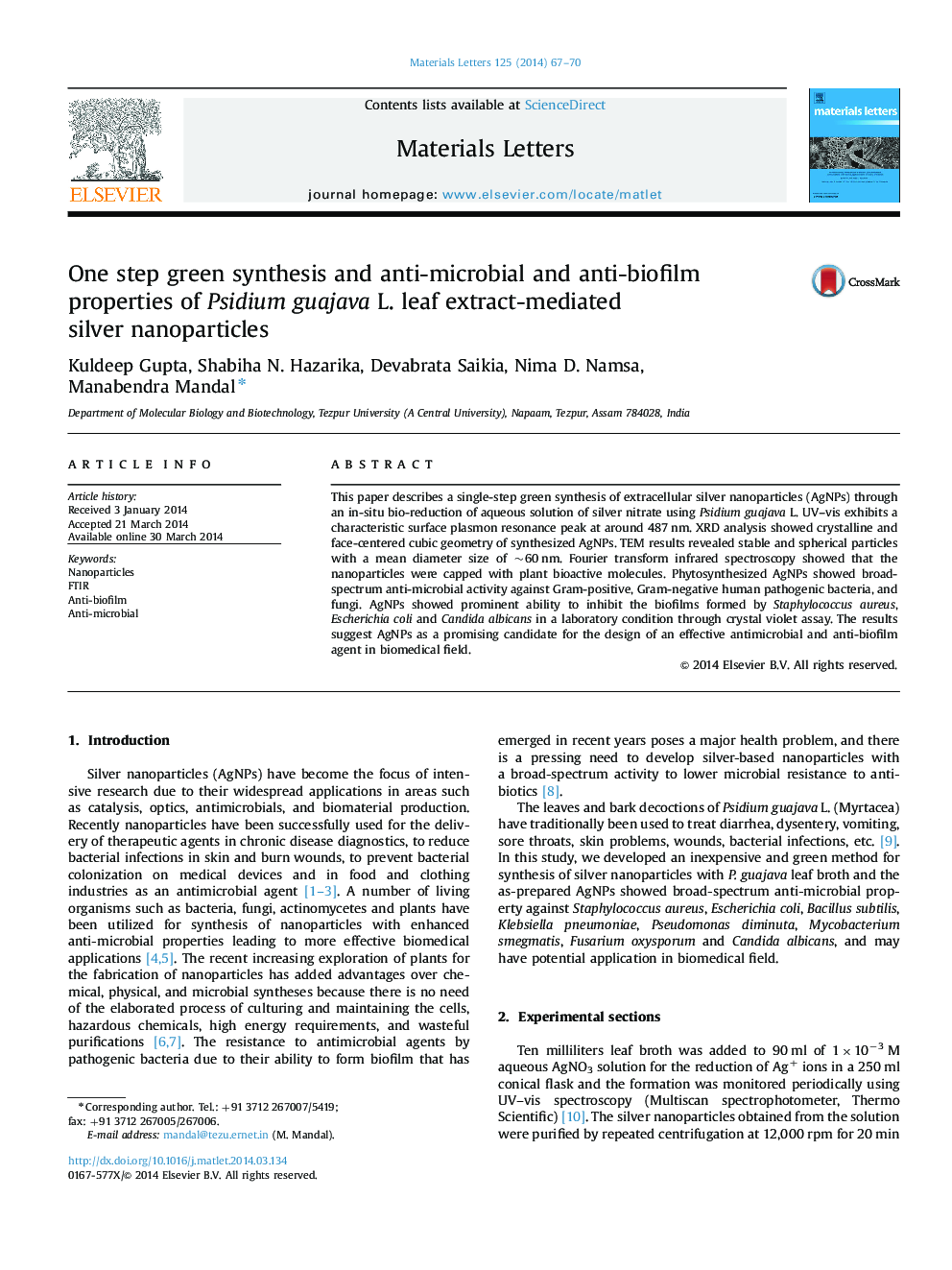| Article ID | Journal | Published Year | Pages | File Type |
|---|---|---|---|---|
| 1644058 | Materials Letters | 2014 | 4 Pages |
•Green synthesis of silver nanoparticles (AgNPs) using Psidium guajava.•The mean average particle size of ~60 nm was confirmed by TEM.•AgNPs showed anti-bacterial and anti-fungal efficacy against tested microbes.•AgNPs inhibited biofilms formed by S. aureus, E. coli and C. albicans.•The results suggest AgNPs as a promising antimicrobial agent in biomedical field.
This paper describes a single-step green synthesis of extracellular silver nanoparticles (AgNPs) through an in-situ bio-reduction of aqueous solution of silver nitrate using Psidium guajava L. UV–vis exhibits a characteristic surface plasmon resonance peak at around 487 nm. XRD analysis showed crystalline and face-centered cubic geometry of synthesized AgNPs. TEM results revealed stable and spherical particles with a mean diameter size of ~60 nm. Fourier transform infrared spectroscopy showed that the nanoparticles were capped with plant bioactive molecules. Phytosynthesized AgNPs showed broad-spectrum anti-microbial activity against Gram-positive, Gram-negative human pathogenic bacteria, and fungi. AgNPs showed prominent ability to inhibit the biofilms formed by Staphylococcus aureus, Escherichia coli and Candida albicans in a laboratory condition through crystal violet assay. The results suggest AgNPs as a promising candidate for the design of an effective antimicrobial and anti-biofilm agent in biomedical field.
Graphical abstractThis paper describes a single-step green synthesis of extracellular silver nanoparticles (AgNPs) through an in-situ bio-reduction of aqueous solution of silver nitrate using P. guajava L. TEM results revealed that the stable silver nanoparticles synthesized were mostly spherical particles with a mean diameter size of ~60 nm. Phytosynthesized silver nanoparticles showed broad-spectrum anti-microbial activity against Gram-positive, Gram-negative human pathogenic bacteria, and fungi. AgNPs showed prominent ability to inhibit the biofilms formed by S. aureus, E. coli and C. albicans under a laboratory condition. Figure optionsDownload full-size imageDownload as PowerPoint slide
